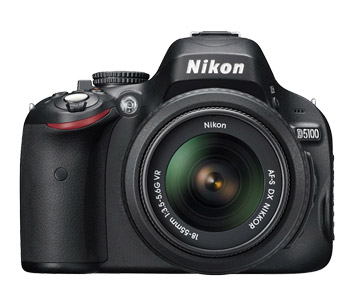The Nikon D5100 has been out for a few months now, and its price range and list of features makes it an attractive DSLR for those photographers who are looking for a budget camera body. It’s certainly a capable offering, packing in more imaging technology that any previous Nikon camera in its class.
However, when stacked against the immensely popular Nikon D7000, how does it compare? If you’re thinking of buying a new camera, how do you decide which one you should you get? Let’s review the essential features of each model and see which one might be right for you.
The D5100
Nikon’s newest “Prothusiast” camera, the D5100 is loaded with many great features that will help you drive your photographic creativity. It’s got a 16.2 MP DX-Format CMOS sensor, which is the same one inside the D7000. It also shoots in 14 bit RAW, so, when it comes to image quality, D5100 will deliver with outstanding results.
Low light performance is good, with ISO capabilities up to 6400. Not as good as the higher end DSLR’s from Nikon, but way better than any of their other lower end models.
It also has 11 point 3D Tracking AF. However, the body doesn’t have an internal AF motor, so focusing speed is largely lens dependent. This also means that AF-S lenses are required for the autofocus to work on this camera. You can use older AF lenses on the D5100, but you’ll have to focus manually with them. You’ll find that some lenses will be “snappier” than others. Overall, the AF system will get the job done, but it’s not a pro system, so you can’t expect it to perform like it’s a higher end DSLR.
The D5100 fires at a respectable 4 fps. Not awesome, but certainly faster than many consumer bodies which top out at 2.5-3 fps.
Video: 1080p HD H.264 moves with full-time autofocus and stereo sound. One very nice feature of the D5100 is the Vari-angle LCD monitor, which opens up and rotates to your desired viewing angle. This makes shooting movies a little more convenient, especially if you’re playing around with interesting angles.
The D5100 also packs in a number of other creative software features, like EFFECTS mode and an HDR setting, plus all the exposure presets that you find on most prosumer cameras, like “Landscape, portrait, action, closeup and silhouette” mode.
It’s got a built in pop-up flash that with a sync speed of 1/200. You can use any of the modern Nikon Speedlights, (SB-700, SB-800, SB-900) but it does not have a commander mode. However, you can control other flashes with any of those compatible flashes, as well as with the SU-800 Wireless Commander.
Overall, the D5100 is a great camera for the novice photographer who wants to get into a Nikon body for under $1,000. It’s a great introduction to photography. Body only for the D5100 is $749. A $100 rebate until November 19 makes it $649. Body with an 18-55mm lens is $849. ($749 right now w/ rebate)
If you can accept the fact that it’s not a “high performance” DSLR, the D5100 is a very lightweight camera that will give you excellent, professional looking images, and it will certainly give you enough features to experiment and grow with your photography. Essentially, the D5100 gives you the exact same image sensor as the D7000, but for $400 less.
If you’re an enthusiast who loves shooting photos, but doesn’t need a pro-caliber body, then the D5100 is probably the right camera for you.
Compared to the D7000
The D7000 is an outstanding camera body. The best way to differentiate between the two is with this statement: While almost no pro shooter out there would use a D5100 as their main camera, the D7000 is the number one body for many working photographers.
Why? Because when compared to the D5100, it has better AF, it’s compatible with a much wider selection of older Nikon non AF-S lenses, it shoots at 6 fps, it has better low light/high ISO capabilities, it’s a little more rugged with better weather sealing, it has a more advanced image processing system, twin SD card slots, and it’s pop-up flash can be used as a wireless commander.
Overall, the D7000 is a lightweight pro grade, much higher performing camera body. While not as rugged as the top shelf Nikons, the D7000 is a fantastic tool that offers awesome flexibility and professional capabilities for many outdoor photography options.
My advice is this: If you can come up with $849 for a Nikon D5100, and you even think that you’re going to get serious about photography, then save your latte and scone money for two months and spring for a D7000. You’ll have a much more versatile camera and you won’t look like an amateur when you bring it out of the bag.
Support this site
Give your virtual thumbs up for the time, energy and research that it takes me to bring you this wide range of material here on my blog. Consider buying from one of the following sites:



[…] Home Skip to content ← Comparing Nikon DSLRs: The D5100 vs. The D7000 […]
Thanks for a very thorough, down to earth, practical discussion of the various bodies. I had come to favor the D7000, and had seen the D600 and D5100, so was very happy to see the side by side comparisons. Now I just need to confirm my choice of the 18-300 VR. I live in Florida and Martha’s Vineyard with lots of wildlife. Also like the min focal distance on the 18-300 for pictures of my sculptures. Thanks for the post.